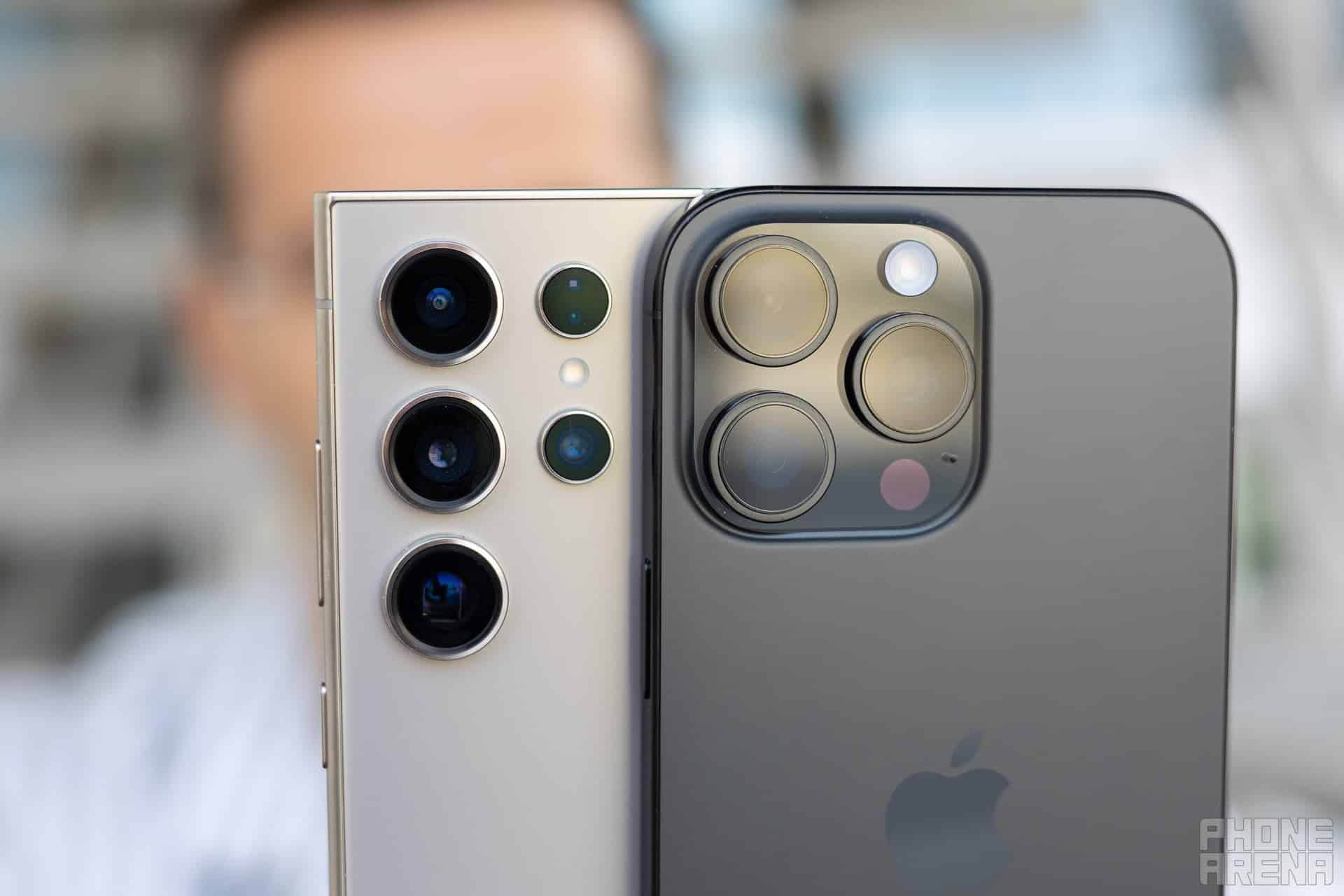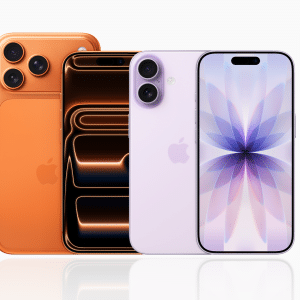While the iPhone 16 Pro models are thriving in sales and popularity, the standard iPhone 16 faces challenges in meeting Apple’s high expectations. This performance gap reveals shifting consumer preferences, reflecting a trend where users prioritize advanced features and premium quality over the entry-level options.
The iPhone 16 Lineup: A Quick Overview
The iPhone 16 lineup, as expected, includes the standard iPhone 16, the iPhone 16 Plus, and two higher-end models—the iPhone 16 Pro and iPhone 16 Pro Max. Each device showcases incremental upgrades across display technology, processing power, and camera capabilities. However, the difference between the Pro and non-Pro models has grown wider, particularly in processing capabilities and exclusive features. For many users, these distinctions are significant enough to steer interest toward the Pro models, resulting in strong sales performance for Apple’s flagship options.
Key Differences Between Pro Models and Standard iPhone 16
The iPhone 16 Pro models have captured consumer interest due to several differentiating features that are unavailable on the standard iPhone 16:
- Processor Power: The Pro models feature the A18 Pro chip, delivering a marked improvement in speed, energy efficiency, and overall performance, while the standard iPhone 16 continues to use the A17 chip.
- Advanced Camera Capabilities: Pro-exclusive camera advancements, such as the periscope zoom lens and improved night photography, make the Pro models particularly attractive for photography enthusiasts.
- Design and Build: The Pro line showcases a titanium frame, providing enhanced durability and a premium feel, contrasting with the aluminum frames on the standard models.
These distinctions are significant enough to make the Pro models a clear choice for those seeking top-tier performance, even at a higher price point.
Why iPhone 16 Pro Models Are Outperforming Standard Models
The success of the iPhone 16 Pro models highlights a growing consumer preference for premium smartphones with advanced technology. Several factors are driving this trend:
1. Strong Demand for Premium Features
Consumers increasingly expect advanced features in their devices, and the Pro models deliver. Features like the periscope camera, improved processing power, and high-resolution displays make the Pro models appealing for tech enthusiasts and professionals. While the standard iPhone 16 offers quality improvements, the Pro models include features that provide significant, tangible benefits, justifying the price difference for many users.
2. Expanding User Base of Mobile Content Creators
The rise in mobile content creation has made advanced cameras, graphic capabilities, and processing power essential features for many buyers. The iPhone 16 Pro models cater directly to this audience with professional-grade camera improvements, making them ideal for those using smartphones for photography, videography, and other creative tasks. The Pro models’ ability to shoot high-quality content attracts content creators and power users, strengthening Apple’s position in the high-end market.
3. Design Choices that Emphasize Luxury and Durability
Apple’s use of premium materials, particularly titanium frames in the Pro models, adds a level of luxury that many consumers find appealing. This emphasis on design and build quality reflects Apple’s commitment to creating devices that not only perform well but look and feel sophisticated. The Pro models’ durable materials also increase their longevity, making them more desirable investments for users who value quality and longevity.
Challenges Facing the Standard iPhone 16
Despite its improvements, the standard iPhone 16 has faced challenges in meeting Apple’s sales expectations. Several factors contribute to this, creating a noticeable divide between the standard and Pro models:
1. Increasing Price Sensitivity for Basic Models
In recent years, the cost of Apple’s standard iPhone has steadily increased, putting it closer to the price range of Pro models. As a result, users are more likely to choose the Pro version to maximize the value they get from their purchase. With premium features now more accessible, some consumers are less inclined to settle for the standard iPhone, particularly if they can find added value by upgrading to a Pro model for a slightly higher price.
2. Mid-Range Competition from Other Brands
The smartphone market is highly competitive, with brands like Samsung, Google, and OnePlus offering powerful mid-range devices with many premium features at lower prices. While Apple’s brand reputation remains strong, the price-performance ratio of the standard iPhone 16 may appear less attractive in comparison. Competing brands are filling the gap for high-quality, mid-tier smartphones, making it harder for Apple’s standard model to capture budget-conscious consumers.
3. Minimal Differences from Previous Generations
Although the iPhone 16 introduces some new features, they may not be compelling enough for users to justify an upgrade from the previous generation. For consumers who already own an iPhone 15 or even an iPhone 14, the differences between models may appear incremental. This “upgrade fatigue” is more apparent with the standard iPhone 16, whereas the Pro models continue to offer a range of new, enticing capabilities that justify the investment.

The Implications for Apple’s Product Strategy
The stark divide in performance between the iPhone 16 Pro models and the standard iPhone 16 offers insights into consumer behavior that Apple will likely consider for future releases. The shifting demand patterns could drive changes in Apple’s approach to pricing, feature distribution, and marketing.
The Case for Greater Differentiation Between Models
The success of the Pro models highlights the appeal of exclusive features that differentiate high-end devices. Apple may decide to further differentiate its product lineup, introducing distinct features or designs that are available only in the Pro models. By doing so, Apple could continue to attract a premium segment of the market, emphasizing innovation and exclusivity to drive demand.
Potential for a New Pricing Strategy
The pricing gap between the standard and iPhone 16 Pro models has narrowed, prompting some consumers to favor Pro models as a better value proposition. Apple could respond to this by re-evaluating its pricing strategy for the standard models, perhaps lowering the entry price to increase accessibility. Alternatively, Apple might consider introducing an entirely new tier, positioning the standard iPhone closer to entry-level buyers while maintaining Pro models for premium customers.
Enhanced Marketing for Standard Models
With the iPhone 16 Pro models capturing much of the media and consumer attention, Apple may benefit from a more focused marketing approach for the standard iPhone models. Highlighting the strengths of the standard iPhone 16—such as battery life, display quality, and camera features—can help reinforce its appeal to a wider audience. Enhanced advertising campaigns that emphasize value and utility could shift consumer perception and reinvigorate interest in the standard model.
The Future of iPhone and Consumer Expectations
As Apple moves forward, the trends surrounding the iPhone 16 Pro models and their popularity provide a clear indication of what today’s consumers expect from a smartphone. The demand for professional-grade technology, luxurious design, and exclusive features underscores a shift toward high-end devices that blur the line between consumer and professional use.
The Influence of Pro Models on Future Product Development
The sustained popularity of iPhone 16 Pro models is likely to influence Apple’s broader approach to product development. Future iPhone iterations will likely see continued innovation at the high end, with advanced technology that sets Apple apart from its competitors. The Pro models’ success demonstrates that users are willing to pay a premium for features that genuinely enhance their experience, encouraging Apple to prioritize cutting-edge advancements in future models.
A Look Toward the Next Generation of iPhones
The iPhone 16 lineup has shown that Apple’s users are evolving, demanding more from their devices than ever before. Apple’s focus on user experience and premium features will likely continue to guide product development, with the iPhone 16 Pro models setting the standard for what an iPhone can deliver. As Apple anticipates the future of its iconic device, it’s clear that the iPhone 16 Pro models are not just popular—they’re defining the direction of the smartphone industry.
In a market that prizes performance, design, and exclusivity, Apple’s Pro models stand out as a powerful testament to the brand’s ability to exceed expectations. The enduring success of the iPhone 16 Pro models showcases Apple’s ability to adapt to consumer demand while shaping the future of mobile technology.












